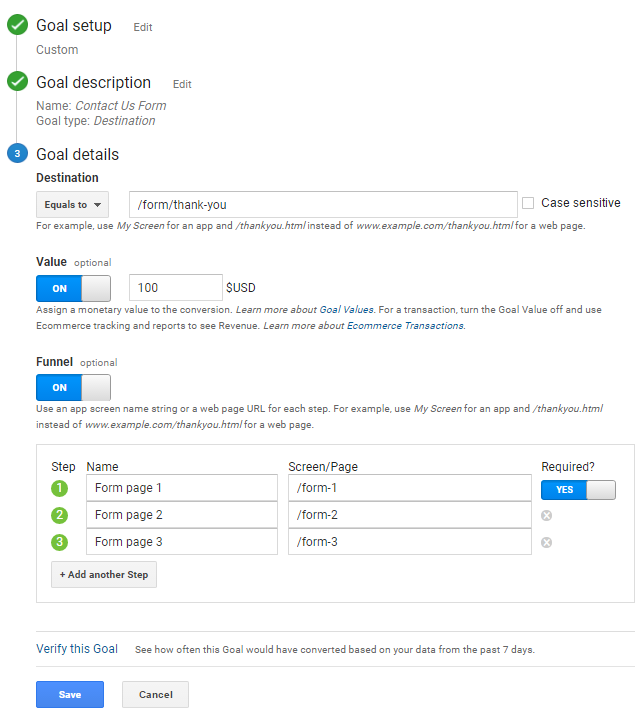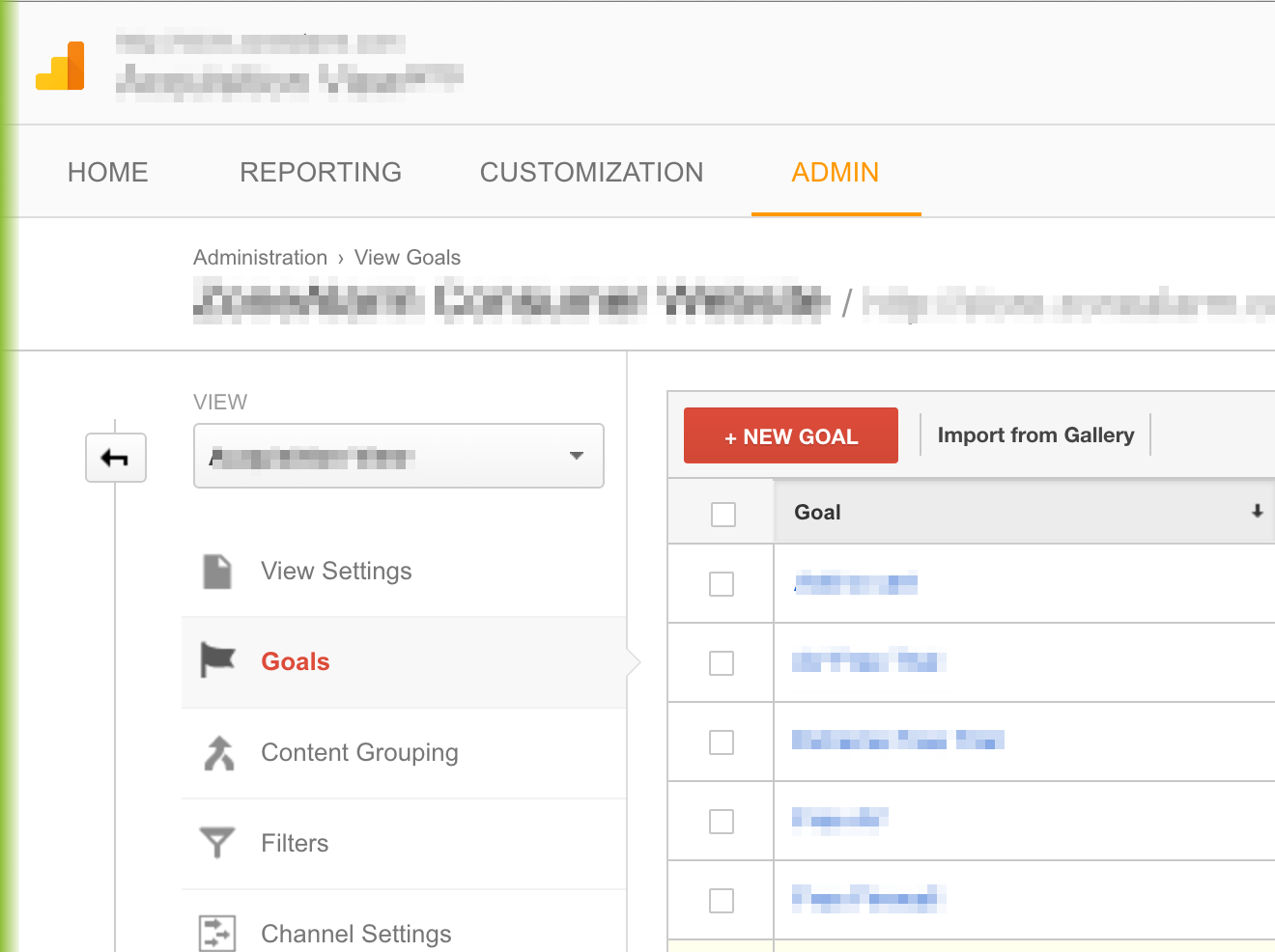Comprehensive Listing of What Data Is Google Analytics Goals Unable to Track
Comprehensive Listing of What Data Is Google Analytics Goals Unable to Track
Blog Article
Discover the Limitations of Google Analytics Goals: Introducing the Information Kind That Remain Untrackable
As companies progressively depend on data-driven decision-making, recognizing the constraints of devices like Google Analytics ends up being extremely important. While Google Analytics Goals deal beneficial insights right into individual interactions, there exist data types that elude monitoring, posturing obstacles to a thorough understanding of customer actions. These untrackable information kinds increase concerns regarding the precision and completeness of the analytics information that companies heavily rely upon for their digital techniques. Interested to discover the covert unseen areas in your data evaluation procedure?
Insufficient Customer Journey Tracking
Insufficient user trip monitoring within Google Analytics can prevent the capability to accurately examine user habits. When the customer journey is not totally tracked, there are spaces in the data that protect against a thorough understanding of how individuals communicate with a website. This absence of understanding can bring about missed out on chances for optimization and renovations to the individual experience.
One common concern with incomplete user trip monitoring is the failure to see the full course that users take before completing a goal or leaving the website. Without this details, it is challenging to determine where individuals might be encountering barriers or friction factors that stop them from transforming. In addition, incomplete tracking can cover the effect of particular advertising and marketing initiatives or website modifications on individual behavior.
To resolve this restriction, it is essential to set up proper monitoring systems within Google Analytics to record the entire individual trip. This may include setting up occasion tracking, goal funnels, or making use of tools like Google Tag Manager to make certain that no important interactions go unrecorded. By acquiring a thorough sight of the customer journey, internet site proprietors can make even more educated choices to enhance user involvement and drive conversions.
Attribution Obstacles
Browsing with attribution difficulties in Google Analytics calls for a complete understanding of how various touchpoints add to the total conversion procedure. Attribution obstacles develop from the intricacy of contemporary client journeys, where customers engage with several channels prior to converting.
One common attribution challenge is the problem in associating conversions to the right source, especially in situations where customers interact with multiple channels before converting. This can lead to mistakes in identifying which advertising and marketing initiatives are driving the most conversions. Furthermore, cross-device tracking positions an additional acknowledgment difficulty, as users often change in between devices during their trip, making it challenging to track their interactions seamlessly. Marketing experts need to carefully analyze and analyze acknowledgment information to make informed decisions and optimize their advertising techniques successfully.
Offline Conversions
Given the challenges linked with connecting conversions properly in online networks, the measurement of offline conversions provides a significant chance for online marketers seeking an extra comprehensive understanding of their customers' trip. Offline conversions describe actions that clients take in the real world, such as making purchases in brick-and-mortar stores or over the phone, attending events, or involving with printed products - what data is google analytics goals unable to track. These conversions are crucial for businesses that run both online and offline, as they provide beneficial understandings right into the performance of advertising and marketing projects across different touchpoints
Tracking offline conversions commonly postured a considerable difficulty for marketers, as it was challenging to attach these activities back to certain on the internet interactions accurately. However, with innovations in modern technology, such as the assimilation of CRM systems, unique identifiers, and discount coupon codes, businesses can currently connect the space in between online and offline information to obtain a more all natural sight of customer habits. By properly gauging offline conversions, marketing experts can optimize their techniques, assign resources much more efficiently, and eventually enhance the general consumer experience.
Cross-Device Monitoring
Cross-device monitoring plays an essential function in recognizing the interconnected nature of consumers' digital communications across multiple gadgets. In today's omnichannel world, where customers seamlessly switch over between desktops, tablet computers, and mobile phones, tracking their behavior across these gadgets is important for marketing professionals to gain an extensive view of their customer trip.

In addition, privacy problems and regulations such as GDPR and CCPA have even more difficult cross-device monitoring. With users requiring more control over their data and boosted restrictions on tracking technologies, next page marketing experts have to discover privacy-compliant and ingenious means to attach customer interactions across gadgets.
Dynamic Content Interaction
Understanding customer engagement with dynamic web content is pivotal in optimizing digital advertising techniques for boosted target market communication. Dynamic web content describes web site components that change based on customer habits, choices, or various other elements, offering a customized experience. Tracking user communications with vibrant content positions challenges for typical analytics tools like Google Analytics.
While Google Analytics can track fundamental interactions like clicks and page sights, it might battle to capture more nuanced interactions within dynamic content. what data is google analytics goals unable to track. Metrics such as time spent on certain dynamic components, float actions, or interactions within pop-ups are frequently not conveniently quantifiable utilizing conventional tracking methods. This limitation prevents marketers' capability to fully realize how customers are involving with dynamic content and customize their methods appropriately

Verdict
To conclude, Google Analytics goals have limitations in tracking incomplete user journeys, connecting conversions accurately, recording offline conversions, tracking cross-device interactions, and determining vibrant web content engagement. These constraints highlight the relevance of exploring added tracking methods and tools to get a much more comprehensive understanding of individual habits and conversions beyond what Google Analytics can offer.
While Google Analytics Goals offer important insights right into individual communications, company website there exist data kinds that elude monitoring, posing obstacles to a detailed understanding of individual habits.Incomplete individual journey tracking within Google Analytics can prevent the capacity to precisely evaluate customer actions. When the individual trip is not totally tracked, there are spaces in the information that avoid an extensive understanding of just how customers connect with an internet site.One common problem with incomplete customer journey tracking is the inability to see the full course that users take previously completing an objective or leaving the site. By obtaining a comprehensive sight of the user trip, site owners can make even more educated choices to enhance customer engagement and drive conversions.
Report this page